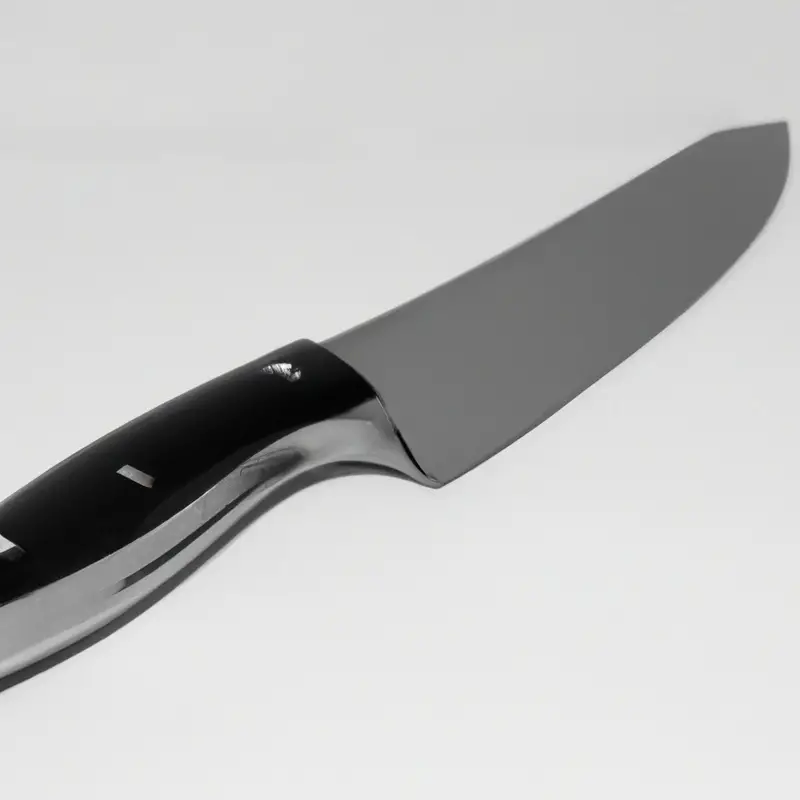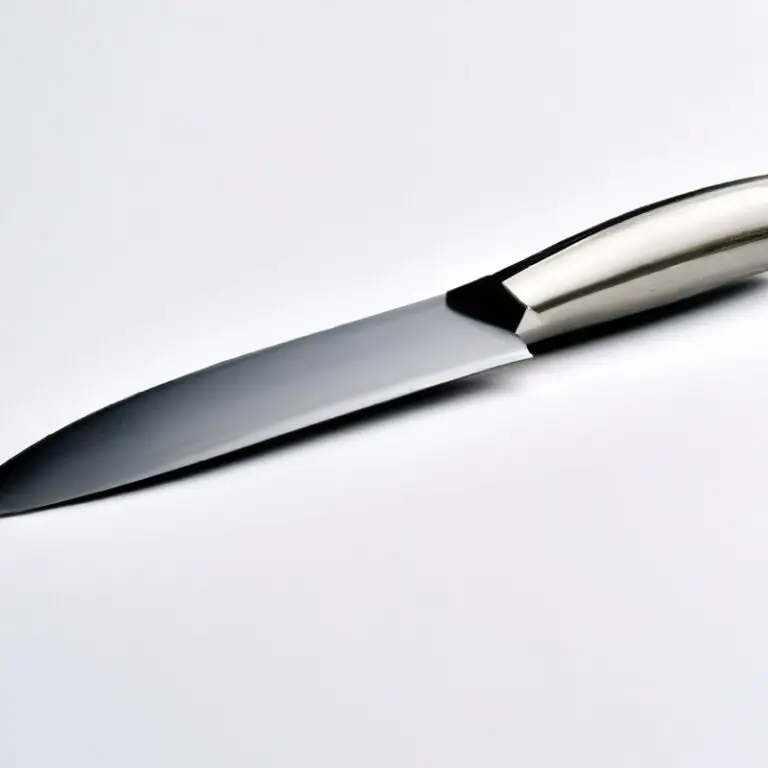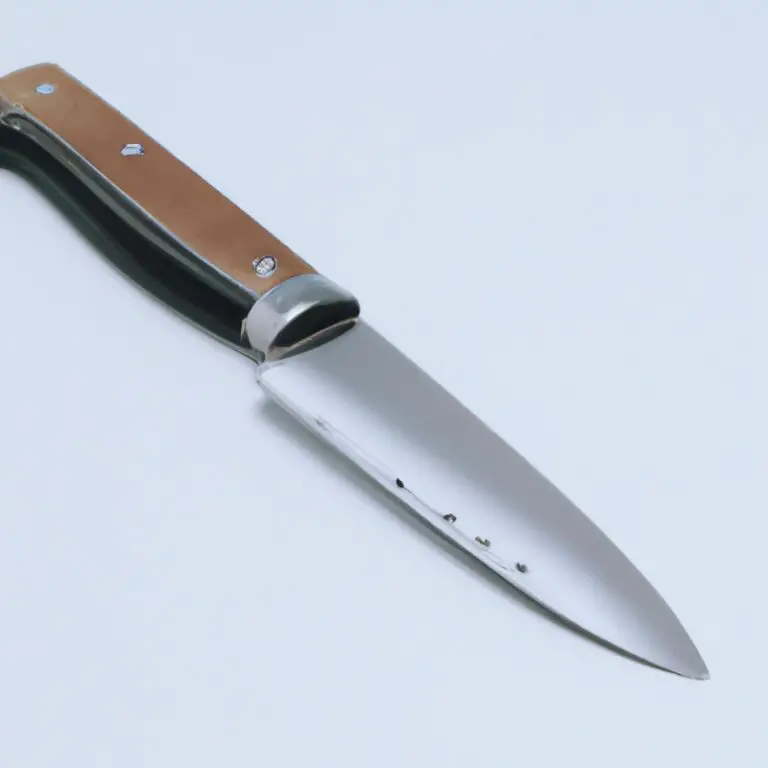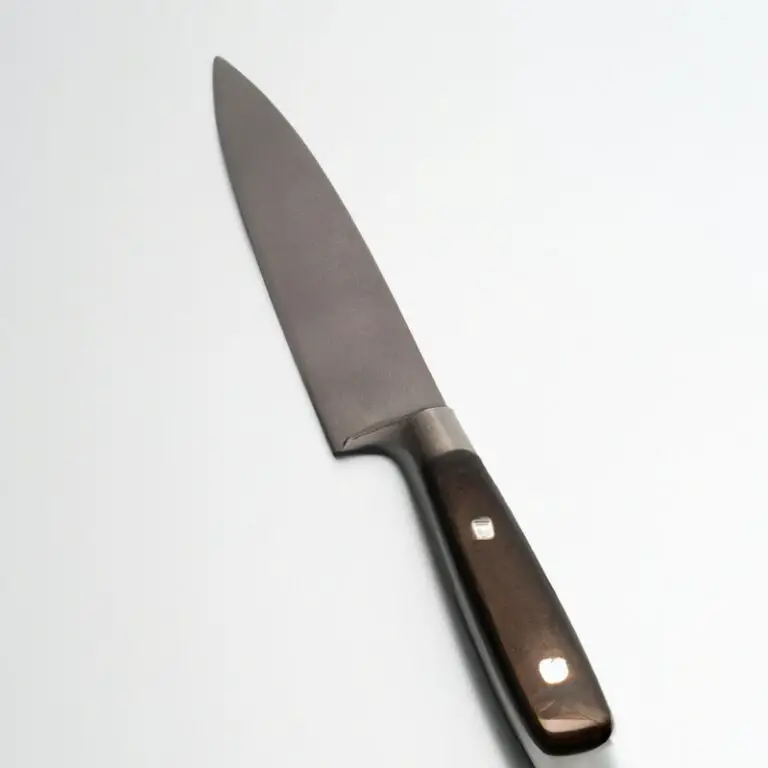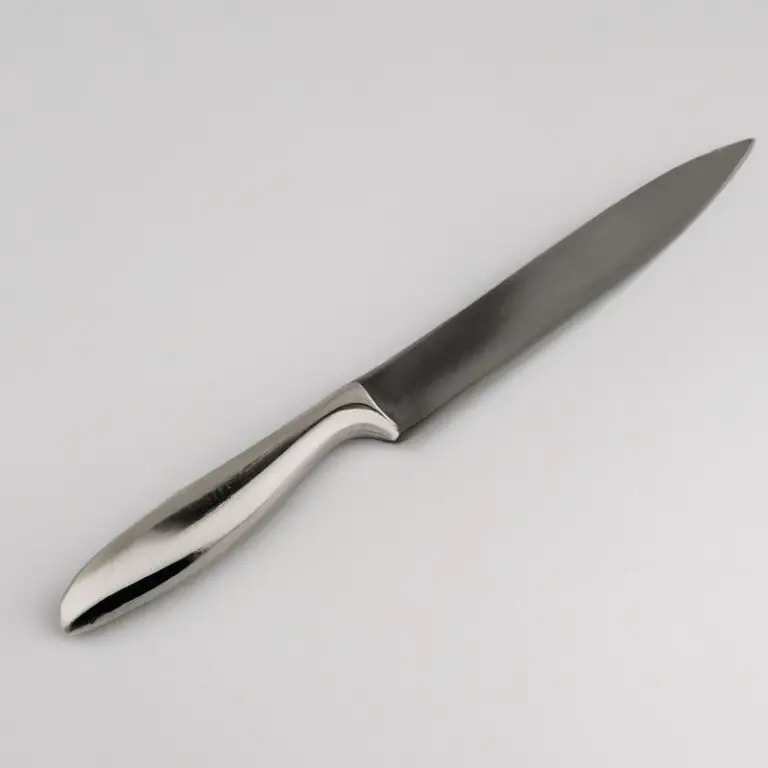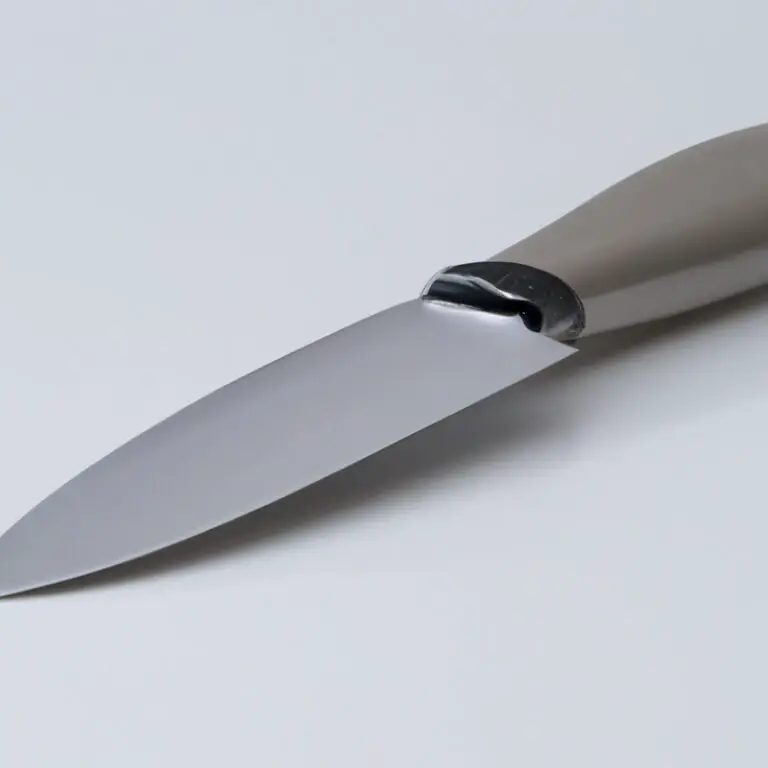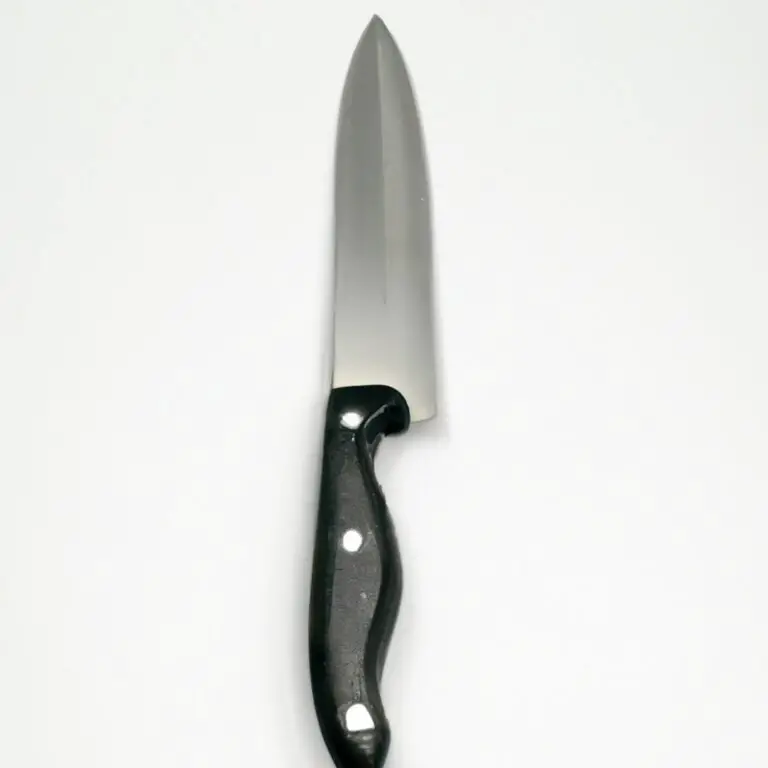Can I Use a Paring Knife To Peel Tough-Skinned Vegetables Like Butternut Squash? Easily!
Key Takeaways:
- A paring knife is not the best tool to peel tough-skinned vegetables like butternut squash.
- Using a paring knife may cause injuries and take longer to complete the task.
- A sharp vegetable peeler or a chef’s knife are better options to efficiently and safely peel butternut squash.
- It is important to choose the right tool for the job to avoid accidents and achieve the desired results.
Picture this – you’ve finally decided to make that wholesome winter soup, and then you notice the intimidating butternut squash sitting in the corner of your kitchen. The thought of peeling its tough skin makes you want to abandon the idea altogether.
But what if we told you that a simple tool like a paring knife could make the task much easier?
As a chef with several years of experience, I’ve come across many instances where a paring knife works wonders, but is it the best option for tough-skinned vegetables like butternut squash? Let’s dive deeper and find out.
| Question | Answer |
|---|---|
| Can I use a paring knife to peel tough-skinned vegetables like butternut squash? | Yes, but it may not be the most efficient tool for the job. A vegetable peeler or a serrated knife may work better. |
Understanding the Purpose of a Paring Knife
The purpose of a paring knife is to peel, trim, and shape fruits and vegetables. It is a small, sharp knife that provides precision and control when working with smaller items.
Paring knives come in different types, such as straight, curved, and serrated, to accommodate various cutting needs.
When it comes to peeling tough-skinned vegetables like butternut squash, a paring knife can be used, but it requires caution and practice. It is essential to understand the characteristics of the vegetable and choose the right tool for the job.
A paring knife can be effective but may take longer and require more effort than other options.
Understanding the appropriate use and care of a paring knife is crucial for safe and efficient food preparation.
Different Types of Paring Knives Available
Paring knives come in different shapes and sizes, and each serves a specific purpose. The three most common types of paring knives are:
- Regular Paring Knife: This versatile knife usually has a 3-4-inch blade and is suitable for most tasks, including peeling, trimming, and slicing.
- Bird’s Beak Paring Knife: This knife has a curved blade that resembles a bird’s beak and is perfect for precision work such as peeling small fruits and vegetables.
- Sheep’s Foot Paring Knife: This knife has a straight cutting edge that curves upward at the end, making it ideal for slicing and trimming.
It’s essential to choose the right type of paring knife based on the task at hand. Using the wrong type of knife can make the job more difficult and potentially unsafe.
Analyzing the Anatomy of a Butternut Squash
The anatomy of a Butternut squash consists of a bulbous end and a narrow stem. The bulbous end contains most of the seeds, while the narrow stem has a harder exterior with a smaller amount of seeds.
The skin of a Butternut squash is tough and thick, and it can be challenging to peel with a paring knife.
The flesh is orange and dense, making it perfect for roasting, pureeing, and as a soup ingredient. It has a nutty and sweet flavor that is perfect for fall dishes.
Knowing the Characteristics of Tough-Skinned Vegetables
Knowing the characteristics of tough-skinned vegetables can help you determine the appropriate tool to use when peeling or cutting them. Tough-skinned vegetables have thicker skins and denser flesh, which can make them more challenging to work with than softer vegetables.
Examples of tough-skinned vegetables include butternut squash, pumpkin, and acorn squash.
These vegetables have a hard outer shell, which can range in color from pale beige to deep orange or green. The flesh inside can be dense and fibrous, making them difficult to peel or cut with a standard kitchen knife.
Be prepared to use more force and apply more pressure when working with tough-skinned vegetables.
One of the characteristics of tough-skinned vegetables is that they can be more challenging to cut into uniform pieces. Using a sharp kitchen knife and a steady hand is crucial to make sure you cut through the tough exterior and avoid damaging the flesh inside.
Additionally, tough-skinned vegetables can require more cooking time than softer vegetables.
Roasting or slow cooking can help soften the flesh and make them more flavorful. Overall, understanding the characteristics of tough-skinned vegetables can help you select the appropriate tools and techniques when prepping them in the kitchen.
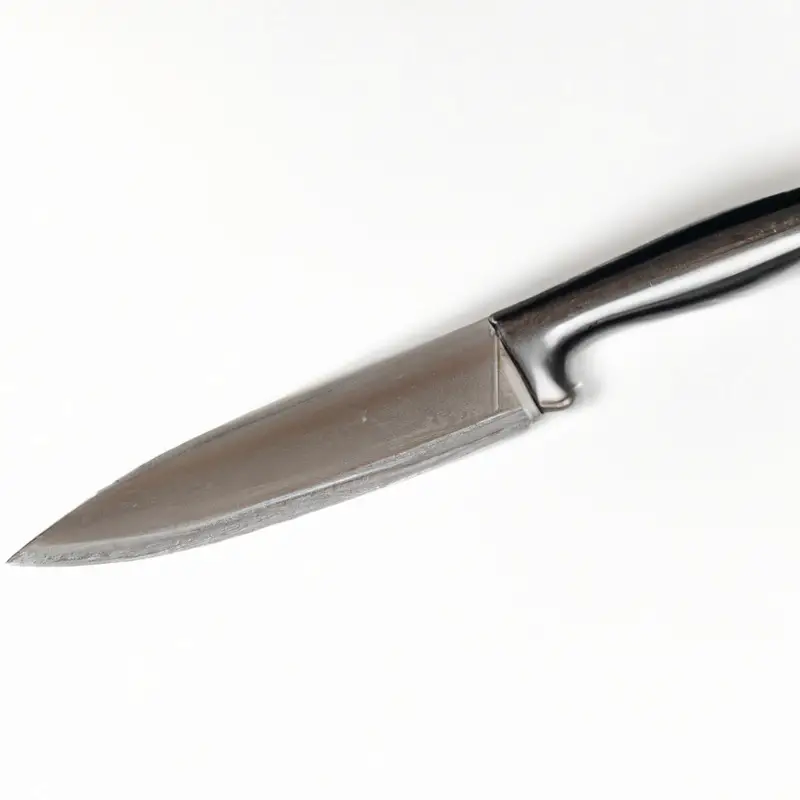
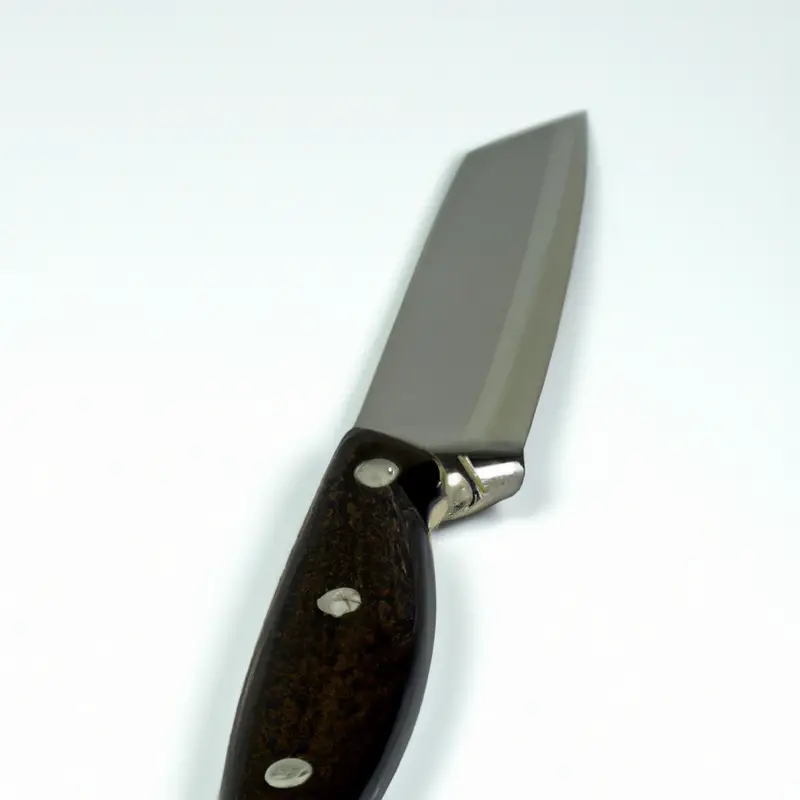
Pros and Cons of Using a Paring Knife to Peel Butternut Squash
Pros of Using a Paring Knife to Peel Butternut Squash:
- Paring knives are smaller than other knives, making them easy to maneuver around curves and bumps on the surface of a butternut squash.
- Paring knives are more precise, ensuring that only the skin is removed and not any of the flesh.
- Paring knives are more affordable than other types of knives, making them accessible to a wider range of people.
Cons of Using a Paring Knife to Peel Butternut Squash:
- Paring knives are not as efficient as other knives, which means that the process of peeling a butternut squash will take longer.
- Paring knives require more effort to peel tough-skinned vegetables like butternut squash, which can lead to hand fatigue.
- Paring knives may not be as safe as other knives, as they require more pressure to peel the skin, which can lead to slips and accidental cuts.
Overall, using a paring knife to peel butternut squash is a feasible option, but it may not be the most efficient or safe choice. It ultimately comes down to personal preference and comfort level when handling knives.
Steps to Follow for Safe and Efficient Peeling
Steps to Follow for Safe and Efficient Peeling:
- Wash and dry the butternut squash thoroughly before peeling to remove any dirt and debris.
- Use a sharp paring knife to make a small incision at the top of the squash, and then gently slice downwards to remove the skin in long, thin strips.
- Keep your fingers tucked away from the blade and use a slicing motion rather than sawing to avoid accidental cuts.
- If you encounter any bumps or uneven areas, carefully use the tip of the knife to remove them, ensuring that you do not remove too much flesh.
- Once you have removed all the skin from the squash, cut it in half lengthwise and scoop out the seeds.
By following these steps, you can safely and efficiently peel tough-skinned vegetables like butternut squash with a paring knife. Remember to always exercise caution when using sharp knives and keep them out of the reach of children.
Alternate Tool Options for Peeling Butternut Squash
There are several alternate tools that you can use to peel butternut squash besides a paring knife. They include a Y-peeler, a chef’s knife, a serrated peeler, and a vegetable peeler with a julienne blade.
A Y-peeler is an excellent option because it has a sharp blade that can easily remove the tough outer layer of the squash.
It is also easy to use and provides a good grip, making it safer than a paring knife. A chef’s knife is another excellent option for peeling butternut squash.
It is more versatile than a paring knife and can serve other purposes in the kitchen.
However, it requires some level of expertise to handle it safely. A serrated peeler is an excellent option for people with arthritis or weaker grip.
Its serrated edges grip the squash firmly, making it easier to peel.
Finally, a vegetable peeler with a julienne blade is an excellent option for people who want to process the squash into thin slices or strips. It is particularly useful for making butternut squash noodles.
When selecting an alternate tool, consider its sharpness, grip, and ease of use.
Additionally, ensure that you use a tool that you are comfortable with and can handle safely.
How to Care for Your Paring Knife to Make it Last
To make your paring knife last, caring for it properly is essential. Here are some simple tips to help you ensure that your knife stays in top condition:
- Hand wash your knife: Avoid putting your paring knife in the dishwasher as it can damage the blade and remove the sharpness. Instead, wash it by hand using mild dish soap and warm water. Dry it thoroughly before storing.
- Store it safely: Always store your paring knife in a knife block or sheath to prevent it from getting damaged or dull.
- Sharpen regularly: Regular sharpening is the key to maintaining the sharpness of your paring knife. Use a sharpening stone or honing rod to keep the blade sharp.
- Don’t use it as a can opener: Using your paring knife to open cans or packages can cause dulling and damage to the blade. Use appropriate tools instead.
- never put it in the sink: Avoid putting your knife in the sink as it may get lost or damaged in other utensils.
By following these simple tips, you can ensure that your paring knife lasts longer and stays sharp for all your kitchen needs.
Tips to Improve Your Paring Knife Skills
Tips to Improve Your Paring Knife Skills:
- Hold the knife properly: Grip the handle firmly and rest your index finger on the spine of the blade for better control.
- Maintain a sharp blade: A dull blade can slip and cause injuries. Sharpen your knife regularly with a honing stone or a sharpening tool.
- Use the right peeling technique: Use a short and swift motion to peel the vegetable and keep the blade at an angle. Start from the top and work your way down.
- Keep your cutting board stable: Use a non-slip cutting board to prevent accidents and maintain stability while cutting.
- Clean your knife after each use: To prevent rust and bacteria buildup, wash your knife with soap and water, dry it with a clean cloth, and store it in a safe place.
- Practice makes perfect: With regular practice, you can improve your knife skills. Start with softer vegetables before moving onto tougher ones.
By following these tips, you can improve your paring knife skills and make peeling tough-skinned vegetables like butternut squash easier and safer.
Final Verdict
A paring knife can be used to peel tough-skinned vegetables like butternut squash, provided that certain steps are followed to ensure safety and efficiency. Understanding the purpose of a paring knife, knowing the anatomy of a butternut squash, and being familiar with the characteristics of tough-skinned vegetables are essential in making the process smooth and hassle-free.
While alternate tool options are available, a paring knife is a versatile and useful kitchen tool when used correctly.
Proper care and maintenance of the knife can further extend its lifespan and functionality. By following the tips and techniques outlined in this article, readers can improve their paring knife skills and confidently tackle tough-skinned vegetables with ease.
Trust in the accuracy and reliability of the information presented, and take away practical insights to elevate your culinary experience.

